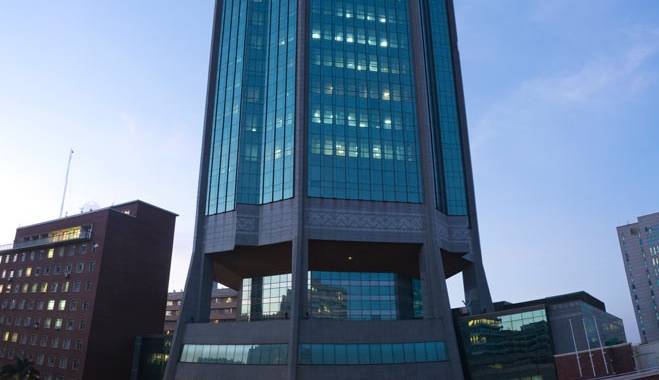
The ManicaPost

Editor’s Musings
Wendy Nyakurerwa- Matinde
RESERVE Bank of Zimbabwe (RBZ) Governor, Dr John Mangudya, recently unveiled the 2021 Monetary Policy Statement, which targets an ambitious 10 percent annual inflation by the end of the year, amid high hopes that this will be the foundation for sustainable economic growth and stability.
This is a legitimate expectation.
But while it is anticipated that Finance and Economic Development Minister, Professor Mthuli Ncube will come in to wave his magic wand to make the prevailing economic challenges disappear overnight and spur the attainment of the envisaged economic growth of 7,4 percent in 2021 in line with the country’s National Budget estimates, it is crucial to scrutinise these expectations.
The growths, the projections and the stabilisations are primarily hinged on agriculture, which is the backbone of Zimbabwe’s economy.
Agricultural activities provide employment and income for 60-70 percent of the population, supplies 60 percent of the raw materials required by the industrial sector and contributes 40 percent of total export earnings.
Therefore, as the main source of livelihood for the majority of the population, the performance of agriculture is a key determinant of how the economy will perform. Consequently, it is crucial that we do it right — a matter of life and death. This is why the revolution that is currently taking place in the agricultural sector couldn’t have come at a better time.
While traditionally youths did not really envision a future in agriculture, there has been a remarkable mind shift as the young people are now claiming their space in the sector’s front row seat.
Great things are being done on those pieces of land, but that is not the purpose of this instalment.
Rather, now that the economy’s heavy machine has been set in motion, we should be thinking about how the benefits can be maximised.
Value add or die poor
The increased agricultural production must be complemented by local value addition. This will not only ensure more profits for the respective farmers. It will also boost the country’s foreign currency generation as finished and more expensive goods will be exported.
It is not helping the situation, for example, that the nation currently has to import a huge chunk of its requirements after the local farmers would have tilled the land and exported the raw materials.
High value macadamia nuts, for instance, are exported in their raw form and then imported back into the country as expensive roasted nuts, chocolates, butter or oil. Surely adding some value to these nuts could turn these farmers into millionaires. But since none of that is happening yet, Zimbabwe is currently exporting macadamia as nut-in-shell worth about US$6 million per tonne, a far cry from the global value of about US$317 million.
Then there is the importation of non-essential goods such as toilet paper, tooth picks and dog food; products that are made from our farm produce. These are commodities that can be produced locally, yet for years they have been siphoning millions of foreign currency beyond the country’s borders at the expense of local investments.
After taking off the overalls and gumboots, the young farmers need to get into their small factories and start manufacturing these products.
Encouragingly, the National Development Strategy 1(NDS1) is already charting the way. This tool seeks to accelerate value addition in the agriculture sector. The target is to increase value added productions from nine percent of exports to 20 percent.
NDS1 is already afoot in increasing production of soya bean, cotton, sugar cane and dairy. When value added, these products have the potential to become great revenue earners.
A charming Cottco, GMB
Zimbabwe has her eyes firmly fixed on the ball, but all this can only be achieved if all the agricultural produce is sold through the formal channels.
Government therefore needs to move with speed to ensure that side marketing of agricultural products is plugged through the availing of attractive marketing terms.
Following years of monopoly and unfavourable deals to farmers, confidence in the formal channels has been waning. That confidence needs to be restored if Zimbabwe is to fully benefit from her investments in the agricultural sector.
After the Cotton Company of Zimbabwe (Cottco), for example – the country’s major buyer of cotton – began paying cotton growers in groceries, some farmers decided that cultivating the white gold wasn’t worth it.
But cotton is Zimbabwe’s second-biggest cash crop and according to the international market ratings, the country’s cotton is the third best in the world. Our cotton is highly regarded in terms of quality and therefore its underproduction is like shooting ourselves in the foot.
Zimbabwe needs to fix such models yesterday.
They are watching us
Now while our youths bask in the glory of finally discovering what matters most, there is need to remain focused as a nation.
Lest we forget, our beautiful country is on the spotlight and the international community is watching. Yes, they may pretend like they do not care what is happening in this small southern African country but they do!
This is our chance to shine in this spotlight and ‘sell’ Zimbabwe. Our chance to reassure investors that Zimbabwe is stable and attractive enough for them to commit their investment for the long run. Our chance for our agricultural sector to become a favourite investment destination.
Indicators abound that Zimbabwe has regained her economic momentum and will soon command her share of the international economy but only and only if till our land diligently and export value added products.
We are only left with nine years for Zimbabwe to attain upper middle income status. Each of these years, starting with 2021, should take us closer towards that goal.
No day wasted, no year wasted.
Till next week, let’s chew the cud.



